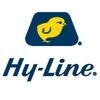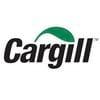I. INTRODUCTION
Australia is highly urbanized, with 80% of people living in the major cities (Australian Government Department of Infrastructure and Regional Development, 2015) and, although Australians believe that farmers do a good job of looking after their animals (Cockfield & Botterill, 2012), there are low levels of agricultural knowledge among the general public (Worsley et al., 2015). Egg production has become increasingly prominent in public discussions of farm animal welfare in Australia, for example the Animals Australia “No way to treat a lady” campaign, targeting caged-egg production (http://www.animalsaustralia.org/ no-way-to-treat-a-lady). Until March 2016 (Han, 2016), there was no legally enforceable standard for eggs sold as “free-range” and at the time that this research was performed, labels such as “free-range” could be used to describe a range of production systems (Parker et al., 2013).
Celebrity chefs such as Jamie Oliver, popular books including Michael Pollan’s The Omnivore’s Dilemma (2006), and films such as Food, Inc. (2008) have stimulated public interest in “ethical” food production and consumption, including avoidance of food produced from intensively farmed animals. Retailers also have had major roles in bringing products with ethical claims more into the mainstream (Dixon, 2003). Ethical food consumerism (Ankeny, 2012) describes a set of voluntary food choices directed toward a “moral other” because of values and beliefs, and may involve avoiding foods that can be morally problematic, or choosing certain foods over others because of a percieved ethical superiority. For example, a consumer who purchases free-range eggs because he or she believes it is wrong to keep hens in cages is participating in an act of ethical consumerism. Ethical consumerism can be thought of as a conscious or political act, where consumers “vote with their dollar” (Shaw et al., 2006; Willis & Schor, 2012) or “vote with their forks” (Parker, 2013), for example, purchasing free-range eggs with the ultimate aim of eliminating cagedegg production through market forces. However, the idea that people can simultaneously act as citizens and consumers has been challenged by some scholars, such as Johnston (2008) and Guthman and Brown (2016; see also Ankeny, 2016 for the contrast between food citizens and consumers).
Research on public perceptions of farm animal welfare has tended to focus on what people know about how animals are treated on farms (Coleman, 2010), what people think about farm animal welfare (Boogaard et al., 2006; Boogaard et al., 2011; Coleman et al., 2016; Prickett et al., 2010; Vanhonacker et al., 2010; Vanhonacker et al., 2012), or whether consumers are willing to pay premiums for products with ethical claims (Chang et al., 2010; Elbakidze and Nayga, 2012; Taylor and Signal, 2009). However, the assumption that such decisions are acts of ethical consumerism or directly related to concerns about animal welfare has not been tested previously. The findings presented in this paper were part of a larger project that aimed to examine Australians’ understandings of “ethical” food choices; however we found that conversations about animal production were dominated by discussions about eggs. Hence, we specifically focus in this paper on motivations to purchase certain types of egg products and in what ways they were considered preferable to “conventionally” produced counterparts. We were particularly interested in whether participants spontaneously explained their purchasing decisions in terms of ethical consumption or whether there were other factors associated with purchasing choices. We also explored other factors such as knowledge of and trust in egg production systems, and whether there were barriers to consumers making purchasing decisions that aligned with their values, for example price.
II. METHODS
This research was approved by the University of Adelaide’s Human Research Ethics Committee (H-2012-054). The research took place in 2014 in Adelaide, the capital city of the state of South Australia (population of approximately 1.2 million), with a large urban area surrounded by a number of agricultural regions. Consistent with qualitative approaches (Denzin and Lincoln, 1994), we used a combination of focus groups and interviews with semi-scripted, open-ended prompts that allowed participants to address the questions posed, explore the reasoning underlying their responses, and connect these understandings to other food practices, as well as broader social and ethical issues and concerns. Participants were asked to reflect on their regular food purchases and to identify anything that they thought of as being locally produced, organic, free from genetic modification, or produced in a way that promoted good animal welfare. They then were asked to explain why they purchased the particular items which they identified. In addition, participants were asked whether there was anything they avoided purchasing for ethical reasons. In this paper, we only report discussions directly related to animal welfare and eggs.
A total of 31 people participated in four focus groups and were recruited through community announcements, newsletters, social media announcements, and flyers distributed at public events. In addition, we held 42 interviews at two suburban shopping centers (“mall intercepts”; Bush and Hair, 1985) in areas frequented by those of lower socio-economic status (based on postcodes and diverse ethnicities), to ensure that we were able to capture a range of views. The focus group and interview discussions were recorded digitally, transcribed, and anonymized, and checked for accuracy against hand-recorded notes taken by one of the researchers. The transcripts were treated as rich, narrative texts, and analysis was performed by one researcher coding the transcripts for major themes emerging from the data, similar to the “open coding” method described by Corbin and Strauss (1990), using a general inductive approach. Validity was checked by the second researcher by comparing these themes to those identified independently by her in the transcripts, and coding for consistency across the themes.
Of the 73 total participants in the research, 70% were women. Age was distributed evenly between 18 and 24 years and 65 age groups, with the lowest represented group being 35–44 (n = 8) and the highest represented group being 55–64 (n = 16). Fifty-five per cent were married or in a de facto relationship, 68% had children, and 54% were not currently working, which was also reflected in the high proportion (51%) of low income earners (indicating that they had a household income of less than AUD50,000 per year1 ). Seventyfive per cent lived in inner metropolitan areas based on residential postcodes and the Australian Standard Geographical Classification system. The educational profile of the participants was mixed: 29% had completed high school only, 22% had a vocational qualification, 22% had completed a university degree and 16% had postgraduate qualifications, and 23% were currently studying either full- or part-time.
III. RESULTS AND DISCUSSION
a) Motivations for Purchasing/Eating Free-range and Cage-free Eggs
Participants associated free-range or cage-free eggs with superior quality in comparison with eggs from caged hens. Quality was mentioned much more readily as a motivating factor for purchase rather than concerns for hen welfare, suggesting that the behavior is directed more toward the consumer, rather than the hens. Participants talked about the superior sensory characteristics of free-range eggs, in particular their taste and yolk color, and free-range eggs also were said to provide greater nutritional benefits than their conventionally produced counterparts. Leaving aside the possibility that these products in fact may have superior attributes over caged-eggs (Hammershøj and Steenfeldt, 2015), labelling may be influencing the association between egg production system and quality. Participants may be using the labels as proxies for “good” or “bad” (Eden, 2011); however, the emphasis placed on superior sensory characteristics suggests that our participants are making an implicit association between free-range and a better, healthier product, and this tendency likely is a result of a “halo effect,” where the evaluation of one attribute strongly influences another (Lee et al., 2013). The label itself may also influence perceptions of taste; it has been shown that people rate animal products labeled with “humane” as tastier than those with other labels (Anderson and Barrett, 2016).
The hen’s diet was very important to our participants, and was used to explain both the superior quality as well as how caged egg production was “not natural” more readily than freedom to roam or other behaviors. By their accounts, birds in free-range systems had more natural or better diets, mostly because of what they were thought not to be eating, specifically “chemicals” such as hormones and antibiotics. In addition, participants described hens in cages as being fed unknown substances that hens would not choose themselves in comparison with feed available in free-range systems. This concern about hen diets is a novel finding with respect to preferences for non-caged eggs. Confinement was seen to restrict natural behaviors, but in particular it is seen as preventing the hens from consuming a “natural” diet. A general preference for “natural” foods (relating to process of production more than content; Rozin, 2005), has been well documented, particularly in relation to genetically-modified (GM) foods (Rozin et al., 2012; Mielby et al., 2013). We suggest that it is the perceived role of “additives” (Rozin, 2005; Rozin et al., 2009) in the hen’s diet that is the main driver in our participants’ descriptions of non-caged and free-range eggs as “natural.” In addition, based on our participants’ responses we suggest that disgust, which influences food purity attitudes (Clifford and Wendell, 2016), also is closely aligned with preferences for non-caged eggs.
Some participants made broader links between animal wellbeing and their own health. The idea that “what is better for the animal is better for me”, and that non-caged eggs were better for people to eat was thought to be obvious by our participants, though this conclusion was typically based on limited and subjective evidence. These associations between animal diet and wellbeing, and egg quality, and the obviousness attributed to them, suggest that the participants felt that these factors are linked to health in a “you are what you eat” manner, and could be interpreted as “magical thinking” (Rozin et al., 1986), for example the ‘laws of contagion’ and transmission of ‘stress’ from caged-hens as mentioned by one of our participants. Magical thinking has been explored in relation to GM and organic foods (Saher et al., 2006) and warrants further examination in relation to animal products.
b) Eggs Compared with Other Animal Products
There are four key factors that help to explain the dominance of discussion of free-range eggs over other products with animal welfare claims, despite asking generic questions about ethics in relation to animal products. First, there were high levels of awareness about the use of cages in egg production, which participants thought was undesirable. Participants mentioned recent advertisements by activist groups as well as documentaries and the activities of celebrity chefs as sources of information. Second, participants compared free-range eggs with other products such as free-range chicken meat in their explanations, typically mentioning clearer labelling and prominent positioning within the supermarket as contributing to purchases. Third, for many respondents, the price difference between caged eggs and other products was perceived to be small enough that even those from lower socio-economic groups could purchase free-range despite the higher price, whereas meat was already an expensive item and thus free-range meat was considered too expensive. Finally, participants described obtaining eggs from their own hens or sourcing them from friends or family, and described these as “free-range”.
c) Information and Trust
Although increasing public concern about animal welfare in Australia is often linked with the so-called “urban-rural divide,” (Meyer et al., 2012), eggs provide an interesting counterexample, given increasing numbers of small urban flocks which allow urban dwellers more direct contact with poultry. Participants talked about backyard egg production as a way to control “unknowns,” particularly about what hens were being fed, and as such reduce the risks to which they and their families were exposed. Having ‘backyard chooks’ was also spoken about as a way of knowing about good farm animal welfare. Participants who had poultry in the past, or who currently kept small numbers of hens for household egg production, used their personal knowledge to justify their claims that intensive production was cruel and “disgusting”. Backyard hens may be more appropriately considered as pets than production animals (Elkhoraibi et al., 2014), and so may be supporting a range of different values and associations than would be typical for food production animals. This topic warrants further investigation particularly given the rapid increase in the numbers of people keeping such animals in Australian cities.
The relationship between trust and risk reduction is characteristic of many contemporary consumer interactions, particularly in highly risk-adverse environments such as ours (Lupton, 1999). Trust was unsurprisingly extended to family and friends, but butchers also were seen as important sources of information on provenance and as such were a preferred place to buy both meat and eggs. However, it seems that for most participants, basic labels provided enough information to enable them to choose one product over another (free range/cage-free over caged eggs) at the point of purchase and there was infrequent discussion of additional information on labels such as stocking densities or voluntary certification. Despite this, many participants were skeptical of the labels and some had even attempted to verify the claims made by checking the companies’ websites for details about conditions.
IV. CONCLUSIONS
Our findings show that there is a strong link between free-range (or cage-free) eggs and perceptions of quality motivating people to purchase these products and appears to be playing much greater roles among these consumers than considerations about animal welfare. There were high levels of awareness of caged-egg production and strongly-held perceptions that caged-egg production is “wrong,” unnatural, and even disgusting, with diet and confinement being key (negative) aspects mentioned by our participants. However, these were only secondary reasons why participants were buying free-range eggs, as their main focus was on quality. Although emotional states of nonhuman animals are increasingly becoming an important area of animal welfare science, in the marketing of animal products happiness is presented as being a factor contributing to better-tasting food (Miele 2011) and our participants largely viewed the happiness of the chicken as “good” because of its influence on the eggs produced by them, rather than as “good for the chicken” as such. The idea that freerange or cage-free production systems are better for hens was not questioned or critiqued by the participants in our study, despite the presence of factors that can affect animal welfare in these systems, as it was not seen by them as central to their purchasing decisions.
These findings present challenges for those interested in improving animal welfare as well as advocates for ethical or political consumerism. It could be argued that, if perceptions of quality drive consumption of products that ultimately generate better welfare for laying hens, then a lack of engagement with ethical issues in egg production on the part of consumers may not matter. However, as highlighted by Parker and Costa (2016) and Miele (2011), ethical and animal welfare issues are not absent in free-range systems. In addition, if increasing consumption of free-range and cage-free eggs (along with other products with animal welfare claims) is being viewed by industry and government as an indicator of community concern for farm animal welfare, then estimates about the levels of concern, and resulting shifts in policy and/or production methods, may be based on false assumptions. Hence, for those interested in promoting animal welfare, it is critical to note that purchasing preferences alone may not indicate increasing support for humane production processes. Instead, it is critical to engage with consumers around the values underlying their preferences in order to better comprehend evolving understandings of various ethical food categories.
Overall, we contend that purchasing free-range or cage-free eggs was not considered to be an act of political consumerism with respect to farm animal welfare by most of our participants. However, the perception that caged-egg production was in various senses “bad” suggests that, as citizens, the participants in our study are not supportive of caged-egg production. More research is needed to understand and unpack community sentiments and explore whether policy changes, either with regard to production methods or labelling would be supported. This study also reveals that even within the “ethical consumption” domain, purchasing decisions are complex and include a range of factors that operate outside what most would strictly consider to be “ethical” considerations.
ACKNOWLEDGEMENTS: Research contributing to this publication was funded by the Australian Research Council Discovery Projects Scheme (DP110105062, “What Shall We Have for Tea? Toward a New Discourse of Food Ethics in Contemporary Australia”). We are also grateful to our research participants, to Ms Liza Huston for administrative support throughout the project, to Dr Jessica Loyer for editorial assistance, and the anonymous reviewers for their constructive feedback.
Presented at the 29th Annual Australian Poultry Science Symposium 2018. For information on the latest and future editions, click here. 














